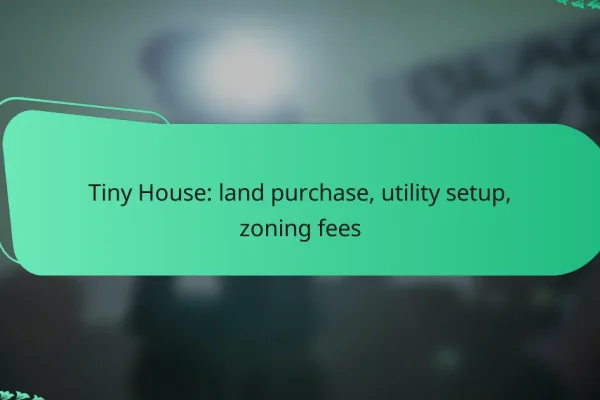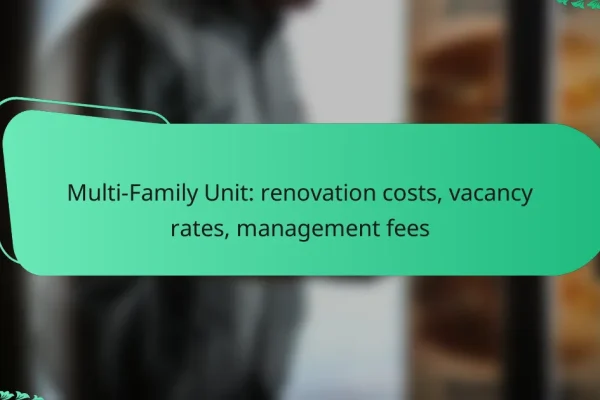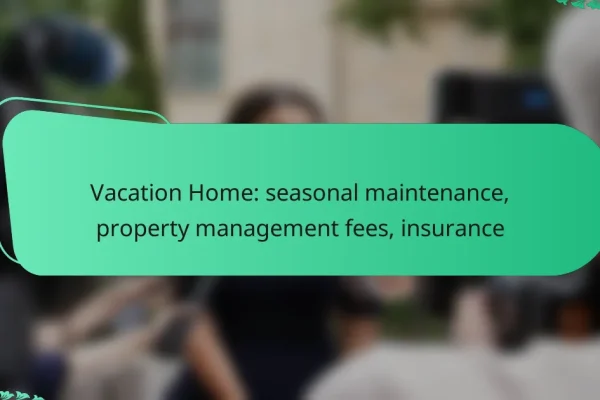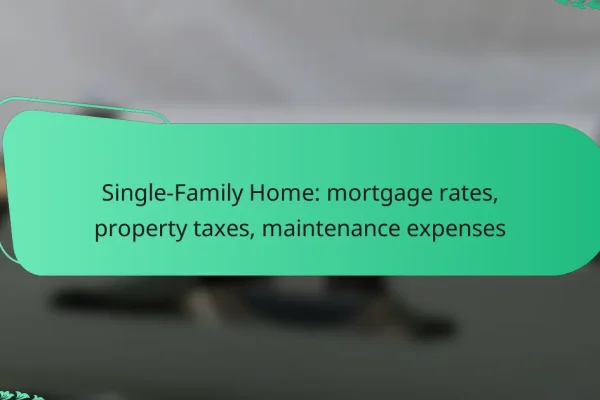What are the main costs associated with residential properties in the UK?
The main costs associated with residential properties in the UK include the purchase price, stamp duty, mortgage fees, property taxes, and maintenance expenses. Understanding these costs is crucial for budgeting and making informed decisions when buying or owning a home.
Purchase price
The purchase price is the amount paid to acquire a residential property. This figure can vary significantly based on location, property type, and market conditions. In the UK, average house prices can range from low hundreds of thousands to several million pounds in prime areas.
When considering the purchase price, it’s essential to factor in additional costs such as surveys and legal fees. These can add several thousand pounds to the overall expenditure.
Stamp duty
Stamp duty is a tax applied to property purchases in the UK, calculated based on the purchase price. The rates vary depending on the price bracket, with first-time buyers often benefiting from exemptions or reduced rates. For example, properties under £425,000 may incur no stamp duty for first-time buyers.
It’s important to budget for stamp duty, as it can represent a significant upfront cost. Use online calculators to estimate your liability based on the property’s price.
Mortgage fees
Mortgage fees include various costs associated with securing a home loan, such as arrangement fees, valuation fees, and legal fees. These can range from a few hundred to several thousand pounds, depending on the lender and the mortgage product.
When choosing a mortgage, consider the total cost of these fees alongside the interest rate. Some lenders offer fee-free options but may have higher interest rates, so weigh your options carefully.
Property taxes
Property taxes in the UK primarily consist of Council Tax, which is based on the property’s value and location. Rates can vary widely, with average annual bills ranging from a few hundred to over a thousand pounds.
It’s advisable to check the Council Tax band of a property before purchasing, as this will impact your ongoing costs. Additionally, some properties may be eligible for discounts or exemptions based on specific criteria.
Maintenance expenses
Maintenance expenses cover the ongoing costs of keeping a property in good condition, including repairs, utilities, and routine upkeep. Homeowners should budget around 1-3% of the property’s value annually for maintenance costs.
Regular maintenance can prevent larger, more expensive repairs down the line. Create a checklist of routine tasks, such as servicing heating systems and inspecting roofs, to manage these costs effectively.
How do property taxes vary across different regions in the UK?
Property taxes in the UK can differ significantly based on the region, primarily due to variations in local council tax rates and property valuations. These differences can impact homeowners and renters alike, making it essential to understand how property taxes are structured in your area.
Council tax bands
Council tax in the UK is organized into bands, which are determined by the estimated value of a property. These bands range from A to H, with Band A being the lowest and Band H the highest, reflecting the property’s market value as of April 1991. For example, a Band D property typically incurs a council tax bill of around £1,500 to £2,000 annually, depending on the local authority.
Each band has a specific multiplier that affects the overall tax rate, meaning properties in higher bands will pay more. It’s crucial for homeowners to check their council tax band, as incorrect valuations can lead to overpayment.
Local authority rates
Local authorities set their own council tax rates, which can lead to significant differences across the UK. For instance, urban areas may have higher rates compared to rural regions due to increased service demands. On average, council tax rates can vary by hundreds of pounds from one local authority to another.
Homeowners should be aware of their local authority’s specific rates and any potential discounts available, such as those for single occupants or low-income households. Regularly reviewing these rates can help manage property expenses effectively.
What are the hidden costs of buying a home?
Hidden costs of buying a home can significantly impact your budget beyond the purchase price. These expenses often include legal fees, survey costs, and home insurance, which are essential to consider for a comprehensive financial plan.
Legal fees
Legal fees are often incurred when purchasing a home, covering the costs of hiring a solicitor or conveyancer to handle the transaction. These fees can range from a few hundred to several thousand dollars, depending on the complexity of the sale and local rates.
When budgeting for legal fees, consider additional costs such as title searches, document preparation, and registration fees. It’s wise to obtain quotes from multiple legal professionals to find a competitive rate while ensuring quality service.
Survey costs
Survey costs are essential for assessing the condition and value of a property before purchase. These costs can vary widely, typically ranging from a few hundred to over a thousand dollars, depending on the type of survey conducted, such as a basic home condition report or a more detailed structural survey.
Investing in a thorough survey can help identify potential issues that may lead to costly repairs later. Always factor these costs into your overall budget and consider the long-term savings from avoiding unexpected expenses.
Home insurance
Home insurance is a critical expense that protects your investment against damage or loss. The cost of home insurance can vary based on factors like location, property value, and coverage levels, typically ranging from a few hundred to several thousand dollars annually.
When selecting home insurance, compare policies to find the best coverage for your needs. Be aware of common pitfalls, such as underinsuring your property or overlooking essential coverage options, which can lead to significant financial loss in the event of a claim.
How can homeowners budget for ongoing maintenance costs?
Homeowners can budget for ongoing maintenance costs by estimating annual expenses and setting aside funds for unexpected repairs. A proactive approach helps ensure that financial resources are available when needed, reducing stress and potential financial strain.
Annual maintenance estimate
Estimating annual maintenance costs typically involves calculating 1-3% of the home’s value. For example, if your home is valued at $300,000, you should budget between $3,000 and $9,000 annually for maintenance, depending on the property’s age and condition.
Consider creating a detailed list of potential maintenance tasks, such as HVAC servicing, roof inspections, and landscaping. This will help you prioritize spending and ensure you allocate enough funds for each task throughout the year.
Emergency repair funds
Setting up an emergency repair fund is crucial for homeowners. Aim to save at least 1-2% of your home’s value annually to cover unexpected repairs, such as plumbing issues or roof leaks. This fund acts as a financial safety net, allowing you to address emergencies without disrupting your budget.
To build this fund, consider automating monthly contributions to a separate savings account. This way, you can gradually accumulate funds without feeling the pinch, ensuring you are prepared for any urgent repairs that may arise.
What factors influence the cost of residential property insurance?
The cost of residential property insurance is influenced by various factors including property location, home value, and local regulations. Understanding these elements can help homeowners make informed decisions about their insurance needs and potential costs.
Property location
The location of a residential property significantly impacts insurance costs. Areas prone to natural disasters, such as floods or earthquakes, typically have higher premiums due to increased risk. Additionally, urban properties may face higher rates compared to rural ones, influenced by crime rates and population density.
Homeowners should research local insurance requirements and consider the specific risks associated with their area. For example, properties in coastal regions may require additional coverage for hurricane damage, which can raise overall costs.
Home value
The value of a home directly affects the cost of property insurance. Higher-valued homes generally require more coverage, leading to increased premiums. Insurers assess the replacement cost of the home, which includes materials and labor needed to rebuild in case of a total loss.
Homeowners should regularly evaluate their home value and adjust their insurance coverage accordingly. Underinsuring a property can lead to significant financial loss in the event of damage, while overinsuring may result in unnecessary premium payments. A good rule of thumb is to review your policy annually and consult with an insurance agent to ensure adequate coverage.















